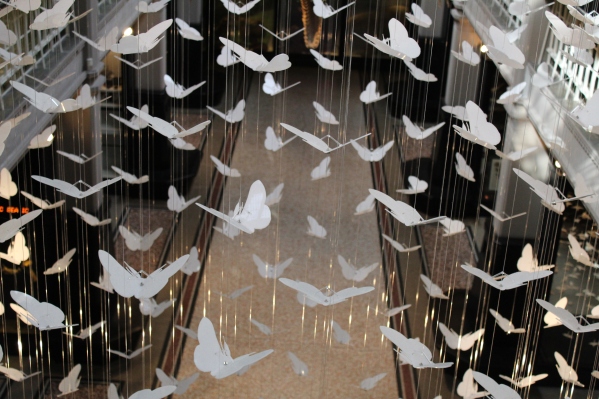 So I’ve been pretty poor at maintaining this blog recently for a number of reasons. Over the last month or so a lot a has happened which has meant that I haven’t had the time or energy to keep up the writing. However, these events have been well deserved and long-needed (even if I do say so myself!). The first major thing was that my boyfriend and I finally got to move into our own flat, it’s only taken us 7 and a half years! Since moving in and buying nice things to furnish it with we are both so much happier. It’s amazing how much a difference having our own space in a nice part of town, with only the two of us to worry about. It’s been quite a long wait but it was totally worth it!
So I’ve been pretty poor at maintaining this blog recently for a number of reasons. Over the last month or so a lot a has happened which has meant that I haven’t had the time or energy to keep up the writing. However, these events have been well deserved and long-needed (even if I do say so myself!). The first major thing was that my boyfriend and I finally got to move into our own flat, it’s only taken us 7 and a half years! Since moving in and buying nice things to furnish it with we are both so much happier. It’s amazing how much a difference having our own space in a nice part of town, with only the two of us to worry about. It’s been quite a long wait but it was totally worth it!
The second major thing that has happened to me recently is that I applied for a studentship at the Univeristy of Southampton to do a PhD in Archaeology. After I completed my masters a couple of years ago I wasn’t convinced that further study was right for me and so I took my current job at Reading Univeristy as a Research Assistant. This job has been amazing allowing me to stay in an academic environment and work with some great people, assiting their research. Over the past year or so I have been thinking about my future and career and struggled to find something that I wanted to pursue. I was then shown the job advert for the PhD Studetship and it sounded ideal. My reasons for not pursuing a PhD sooner revolved around the topic and cost, however this one ticked all of the boxes. The studentship aims to improve aging techniques for human skeletal remains in archaeological assemblages which could provide a positive contribution to the field – something that was important to me, plus there was the added benefit for being funded.
I am extremely pleased to say that this week I recieved confirmation that I had been awarded the studentship! I will be starting sometime at the end of September and I’m very much looking forward to it. It will allow me to work in an area that I am passionate, carry out my own research and to potentially meet a lot of interesting and exciting people. To be honest I can’t really believe it still but I’m sure it’ll sink in at some point!
Getting to this point has not been easy – for myself or my family. I have very nearly given up on pursuing a career in the anthropology/archaeology field on multiple occasions even though I knew that wouldn’t make me happy. I have always heard, and even said myself, that you should do something that makes you happy but that it so much easier said then done. It is really difficult pursuing your dream job, especially if it’s in a slightly niche subject or if you need lots of work experience to get anywhere, and getting a suitable income to provide for yourself. I am hopeful in saying that I think that my PhD is that start of my career in a subject I really enjoy, but it has been sheer determination and a lot of support from my family and boyfriend that has really got me through. I feel very lucky to have gotten here, and yes I have worked very hard to get here, but I still feel lucky.
If you are trying to pursure your ideal career, or are attempting to get into a difficult field – keep going. Work hard, be nice to people and take any opportunities that you can manage – you probably won’t be able to do everything but showing you tried will count. Also make sure you are surrounded by people who support you and who you can depend on. If you’re going through things like I have over the past year or so you’ll need help and someone to turn to when you are feeling bad about yourself and your decisions. They are invaluable and are honestly the reason why I have managed to get this far. However, finally remember that there is an element of luck in all of this. I was luckly to see the job/PhD advert when I did, but that doesn’t mean it won’t happen just that it might happen when you don’t expect it!
I don’t usually write posts like this, and to be honest I didn’t really intend to when I first sat down today, but I felt like I’ve managed to get some things off my chest. I also hope that if anyone who has been in a similar position to me over the last year reads this I hope this post can bring them a little comfort or advice. You’re not alone, and keep your head up – I’m pretty certain it will work out in the end!








